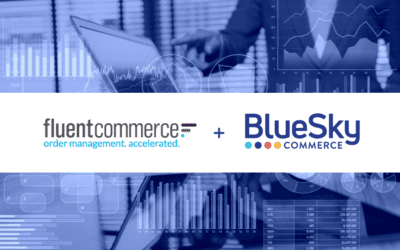The digital revolution has reshaped the way businesses operate, and B2B e-commerce has emerged as a critical avenue for growth. However, transitioning to B2B e-commerce is challenging, and one significant hurdle is gaining acceptance from your sales team. This...
Insights
Should You List Your Products on Third-Party Marketplaces?
BlueSky Commerce Blog
Featured
Related Posts
The 3 eCommerce tactics that led to a record-breaking 2022 holiday season
We saw record-breaking sales in the 2022 holiday season. Why is that? Because companies are stepping up to provide excellent customer experiences and anticipate their clients' needs. To make sure you are prepared for next year, read this article from Adobe to start...
Have Questions?
Get In Touch

BlueSky Commerce
- BlueSky Commerce Partners with commercetools
- KLaunch and BlueSky Commerce Announce FoodBridge, An AI-Powered E-Commerce Solution Created for the Financial Stability of Food Banks
- Catch up with BlueSky Commerce at Shoptalk 2023!
- Industry E-Commerce Sales Veterans Leading the Way at BlueSky
- BlueSky Sponsors Brooke’s Place 2022 Hope Fore Tomorrow Golf Outing June 6, 2022
- BlueSky Commerce announces strategic partnership with Fluent Commerce
- 7 Ways to Modernize Your E-Commerce Site Design
- Creating a Digitally Native Culture: A 360 Approach to Digital Transformation
- How to Take Your B2B Brand Direct-to-Consumer
- BlueSky Commerce Sponsors Brooke’s Place Hope Fore Tomorrow Golf Outing
Follow Us
Should You List Your Products on Third-Party Marketplaces?
The presence of third-party marketplaces are becoming increasingly more abundant. For the first time ever, Amazon has outpaced search engines as the first place a consumer product search originates.
Should I sell my products on a marketplace?
Benefits
- Grow sales
- Reach new markets
- Quickly build brand/product awareness
- Mitigate fraud risk
Downsides
- You don’t own the customer
- Limited control of customer experience
- Selling costs can be prohibitive
- High support requirements
Which third-party marketplace is right for my business?

Target markets in third-party marketplaces:
Key Takeaway
Product offering:
If you don’t have anything in that category, the next place to look would be your standard stock items. Regardless of what you list, review listings to see if similar or the exact same item exists on marketplace, find out the going rate and determine if you can compete.
Key Takeaway
Budget – Finding the Goldilocks zone in third-party marketplaces:
What complicates things is that most platforms won’t let you list items for a higher price than you sell them for on your website, meaning you can’t raise your prices on the marketplace to account for their fees. You also can’t create a price war with yourself to push traffic to your site by undercutting your prices on a third-party marketplace. So, if your prices are already rock-bottom, your margins just got that much tighter.
While also reviewing costs to sell, look to see if the marketplace offers advertising to help promote your offering. For instance, Jet.com and Walmart.com don’t allow advertising, however Amazon and Ebay do. Amazon’s advertising is on a cost-per-click basis, similar to Google Adwords. Ebay’s advertising is unique in that they have different rates per category. With Ebay you also have the option of making your listing stand out with upgrades such as bold text, larger pictures and many other options.
Key Takeaway
Resource requirement:
It’s critical to understand how you will manage inventory that is potentially shared with your other channels. Your strategy here may vary depending on the types of products you are selling. If you are selling discontinued, slow moving or closeouts product lines with limited and finite inventory you may need to update said inventory more frequently than if you are selling your primary product lines with high inventory availability.
Key Takeaway
Conclusion:
When you’re ready to take the next steps, BlueSky’s Digital Agency team can help set you on the right path forward.
Start the Conversation
BlueSky’s unmatched commerce expertise allows us to help our clients understand how to utilize omnichannel and business solutions to reach, attract, engage, and grow customers.

Related Posts
Is real-time inventory visibility a challenge for your business?
BlueSky is excited to see that its partner, Fluent Commerce, has announced their powerful new data tool. 'Fluent Big Inventory' is a faster, more streamlined way to process inventory data. It helps solve problems like overselling stock and cancelling orders and...
HCL Commerce Featurette: Signals CDP
Welcome to this month’s BlueSky Featurette where we dissect a feature of the HCL Commerce platform or in this case, a feature that is coming soon! HCL is introducing an open-source customer data platform (CDP) called “Signals” to be included in the HCL Commerce...
HCL Commerce Featurette: Marketplace
Welcome to this installment of BlueSky’s featurette series, where we break down a feature of the HCL Commerce platform. HCL continues to push the envelope when it comes to adding new functionality to the Commerce platform. This featurette highlights their newest...


